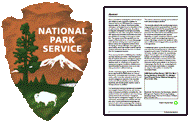National Park Service
Date of this Version
2008
Abstract
NPS interpreters sometimes ask why the archeological sites at Brooks Camp are worth preserving after having undergone such extensive research. Dumond constructed a 4,500-year cultural chronology that demonstrates that the Brooks Camp archeological record has links with archeological traditions from both the Bering Sea and the North Pacific regions. We know less about the lives of the people who occupied the many houses, and how the groups of houses and pit features along the river and lake terraces functioned as communities. Why, after centuries of occupation, were yearround settlements abandoned at Brooks River, and why have archeologists not found evidence of use there during the Russian period? These are important questions for understanding the history of the region. The Brooks River sites were listed as an archeological district on the National Register of Historic Places, and later the district was designated a national historic landmark (NHL) in recognition of its national significance. Protecting the Brooks River NHL from the constant pressure to develop and upgrade facilities for guests and park staff is a continual challenge for NPS archeologists.


Comments
Published in Weber, Samantha, and David Harmon, eds. 2008. Rethinking Protected Areas in a Changing World: Proceedings of the 2007 GWS Biennial Conference on Parks, Protected Areas, and Cultural Sites. Hancock, Michigan: The George Wright Society.